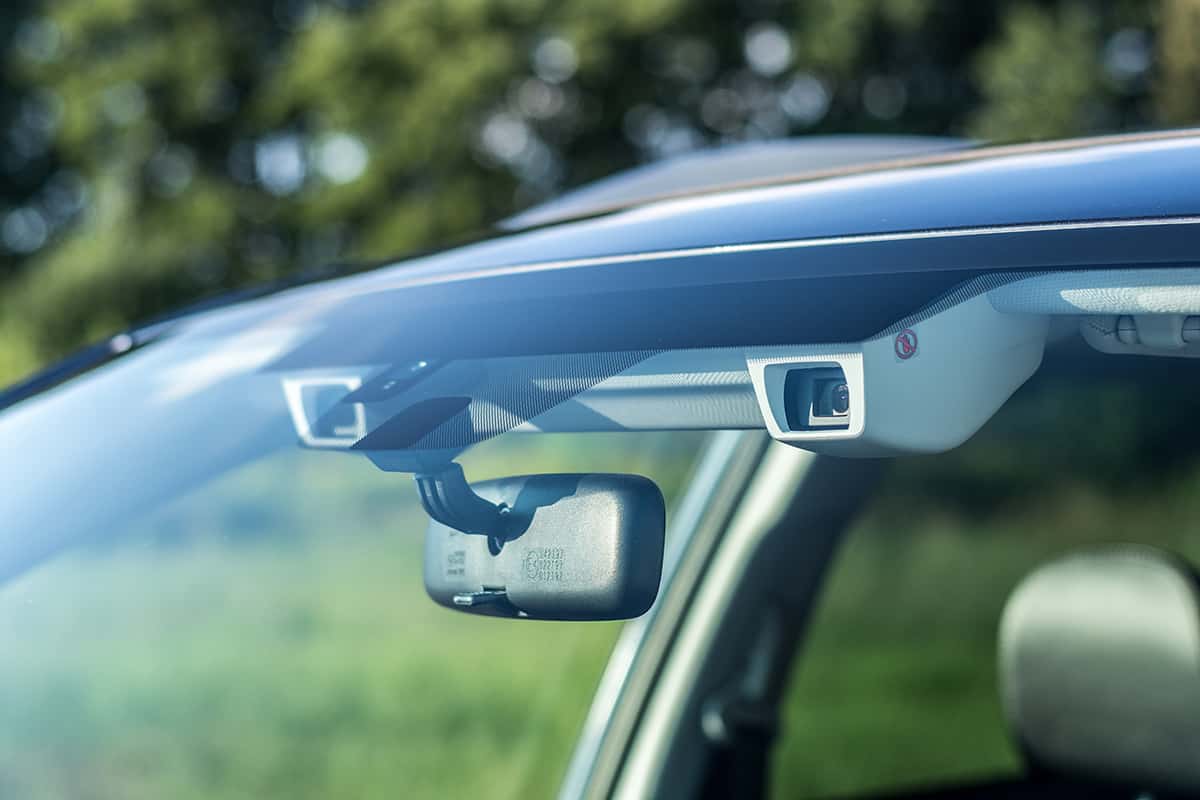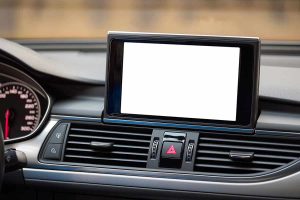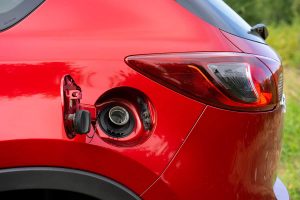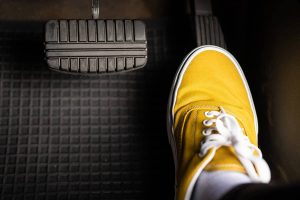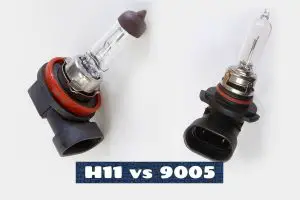Subaru’s EyeSight is a support program that helps drivers know what’s going on around them. While its purpose is to add extra awareness, EyeSight isn’t foolproof, and from time to time, the associated hardware may not seem to work or not work at all.
Here are some of the most common problems with Subaru’s EyeSight:
- Defective brake lights
- Failure to detect traffic
- Malfunction due to weather conditions
- Inability to decipher colored signals
- Pre-collision brake failure when reversing
- Front camera obstruction
- Unclear lane detection
- Limited viewing scope
In today’s guide, I’ll explain what the EyeSight support program is, how to turn it on, and how to resolve the problems listed above.
What Is Subaru EyeSight
Subaru EyeSight is an advanced driver assistance system that uses cameras and sensors to monitor the road and surrounding environment. It is designed to help prevent accidents and make driving safer by providing driver alerts, automated braking, and other features.
The features and functions of EyeSight are as follows:
- Dual front-facing cameras—These cameras, cleverly and unobtrusively installed near the rearview mirror, constantly monitor the road ahead for potential threats.
- Adaptive Cruise Control—With this function enabled, the car will automatically slow down or speed up to keep a safe distance from the car in front.
- Lane Keep Assist—By making small steering adjustments whenever necessary, this function helps keep the vehicle centered in its lane.
- Pre-Collision Braking—EyeSight can automatically reduce engine power to help mitigate the impact of a collision if it detects that one is imminent.
- Pre-Collision Throttle Management—EyeSight can identify potential collision hazards up ahead. The engine’s output will be lowered to reduce the potential for an impact as well as the severity of any frontal impact damage.
While EyeSight can help mitigate or avoid collisions, it’s not a foolproof system. Motorists will still have to drive their Subarus with caution, especially when you consider the numerous problems that have been associated with the driver assist technology.
How to Activate and Deactivate EyeSight
EyeSight is not a mandatory driver-assist program. So, you can turn it on and off whenever you want.
To turn EyeSight on, simply depress any of the EyeSight function buttons you wish to activate. Each of the buttons has an emblem that correlates with a specific function. For instance, if you want to activate Lane Keep Assist, look for the button with the emblem of a car in the middle of a lane. Conversely, if you want to deactivate any of the EyeSight functions, simply press the button until it pops out.
It may take a few seconds for your Subaru to register an activated or deactivated EyeSight function. So, I recommend doing this while pulling over to the side of the road while the vehicle is in park.
Subaru EyeSight—Problems
While EyeSight has undergone extensive upgrades since its introduction in 2008, it is far from being 100% perfect. Despite overhauls made to this system, users have still experienced the same issues that arose in earlier model years. Here are some of the most common EyeSight problems.
1. Defective brake lights
Sometimes, EyeSight would continuously activate the brake lights, regardless of whether the driver hit the brake pedal or not. This would most likely occur when the EyeSight system was deactivated.
2. Failure to detect traffic
This was a common occurrence in older EyeSight versions. The front-facing cameras would fail to detect cars that slowed to a crawl in slow traffic situations. As a result, EyeSight would not always activate the brakes to avoid collisions.
3. Malfunction due to weather conditions
EyeSight is heavily reliant on visibility. The cameras need to detect obstacles in front and to the side of the vehicle. During terrible weather conditions (e.g., heavy rain, heavy snow, fog, extreme sunniness), the cameras would fail to detect and mitigate potential collisions with nearby objects.
4. Inability to decipher colored signals
EyeSight was advertised to be the driver’s “second pair of eyes.” With older versions of EyeSight, the problem was that it would fail to pick up signs and signals that were in color. Basically, if something was not black, white, or a shade of gray, the cameras would fail to identify it as a potential obstacle. Best-case scenario, the Pre-Collision Braking system would only work when driving between 20 and 31 mph.
5. Pre-collision brake failure when reversing
The front-facing cameras were unable to detect objects that were immediately behind the vehicle. As a result, EyeSight would not assist drivers when backing their vehicles out of parking lots or driveways.
6. Front camera obstruction
This was a common issue in older Subaru year models. The front-facing cameras would be placed seemingly carelessly within the driver’s field of view. While the cameras weren’t bulky per se, they were noticeable and would distract drivers.
7. Unclear lane detection
In order to detect whether the car is deviating from its lane, the cameras would have to identify the location of the lane lines. This would be a problem in certain areas where the lane stripes were old and faded. The effect was that EyeSight wouldn’t bother keeping the car in its lane.
8. Limited viewing scope
Even in modern Subaru models, the dual front-facing color cameras may not have complete visibility of the front and sides of the vehicle. This was especially a problem when EyeSight wouldn’t pick up on other vehicles unless they came within 10 to 20 feet of the cameras. Only when another vehicle came into viewing range would the auto-braking system kick in, which would be highly dangerous on highways.
Possible EyeSight Fixes
As I mentioned earlier in this guide, Subaru’s EyeSight is not an excuse for reckless driving. Motorists must still rely on their senses, including common sense, when operating a vehicle, despite adding a “second pair of eyes.”
However, if your Subaru’s EyeSight is experiencing any of the problems listed above, here are a few potential fixes you can try implementing.
1. Turn Off EyeSight Until Needed
EyeSight is especially helpful on city roads where traffic is slower and obstacles, including other vehicles, are easier to identify. As such, you should deactivate EyeSight when driving on highways and freeways and only turn it on in slow traffic conditions.
2. Install a rear-view camera
A rear-view camera will pick up any objects that the EyeSight’s dual cameras will miss from behind your car. You may need to hire a professional mechanic to install the camera and hook up its wiring to your built-in display.
3. Upgrade the EyeSight cameras
If you have an older EyeSight version, you should consider upgrading the cameras to the dual front-facing ones used in the most recent EyeSight version. These cameras are more sensitive and can identify more objects in less time.
4. Consult with a Subaru mechanic
Regardless of what year you purchased your Subaru, if the EyeSIght is experiencing any problems, you should get it checked out by a trained professional. This is especially true if the EyeSight system is acting up after you’ve gotten into a collision or if something fell on your car. The impact of any of these situations may have caused EyeSight to malfunction.
5. Purchase a new Subaru
Subaru is not paying me to write this, but you should consider upgrading your car, especially if it has driven over 100,000 miles and is older than 10 years. Of course, a brand-new Subaru can be costly, so you may want to consider scouring the secondary market for Subarus from 2020 or more recently to take advantage of the best versions of EyeSight.
6. File a complaint with Subaru
In 2015, Subaru was forced to recall thousands of cars due to EyeSight problems. You should try filing a complaint with the dealership where you purchased your vehicle to have it recalled and inspected.
Which Subaru Models Come with EyeSight?
Starting in 2022, the Forester, Legacy, Outback, Ascent, and the A/T version of the BRZ come standard with EyeSight. It’s also available in certain trim levels of the Impreza, Crosstrek, and WRX with CVT transmission.
Does EyeSight Actually Work?
Assuming the driver assist system is functioning as it should and that you are driving in ideal conditions (clear visibility, not too sunny, slow traffic, etc.), EyeSight should keep you from frontal collisions.
The Institute for Highway Safety (IIHS) studied the safety of EyeSight on pedestrian crashes and found that it had reduced injuries by up to 35%. EyeSight could also reduce injuries in rear-end collisions by up to 85%.
Can You Install EyeSight in Older Subaru Models?

Sadly, you cannot.
The only way to enjoy the EyeSight system is by purchasing a car with EyeSight built into it. EyeSight is a lot more than just front-facing cameras—it involves special windshields, tons of electrical wiring, a compatible steering wheel, and so on. Even if you purchased a new Subaru, such as a 2022 Impreza, with the wrong trim level, you cannot add EyeSight in the future.
